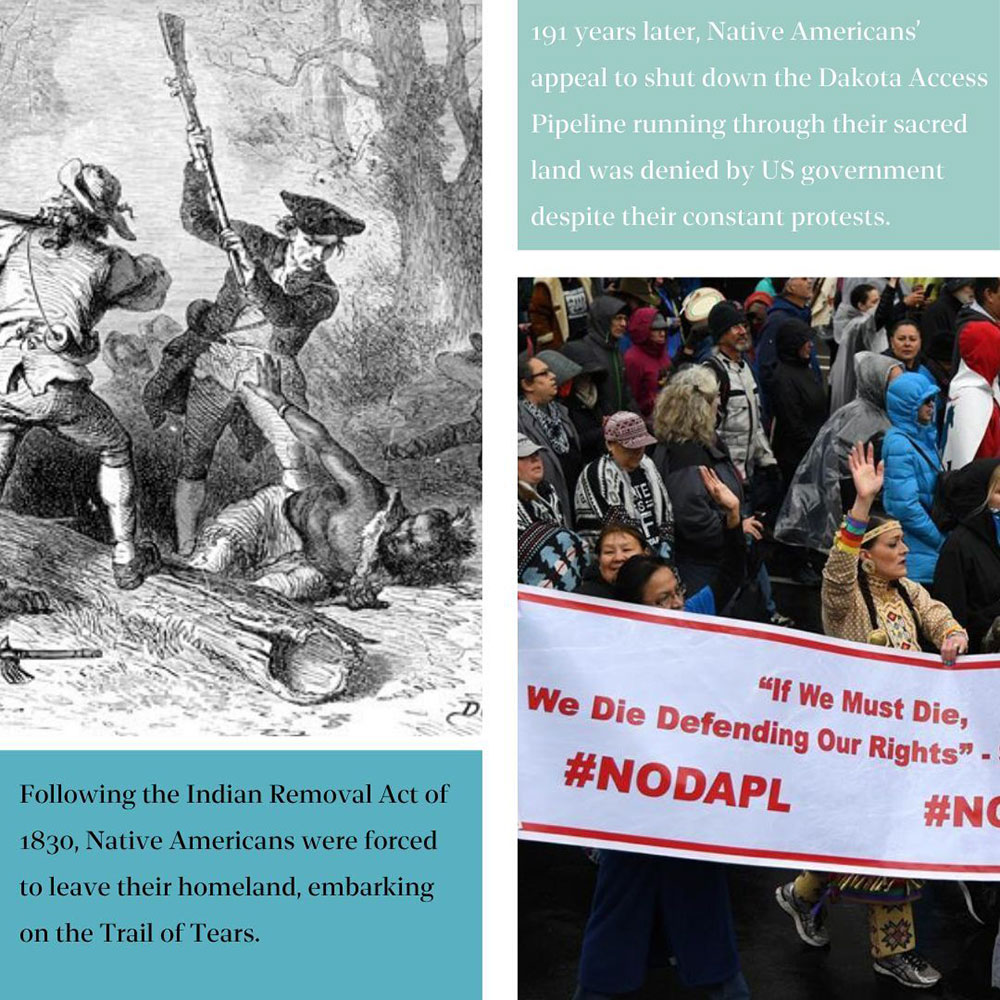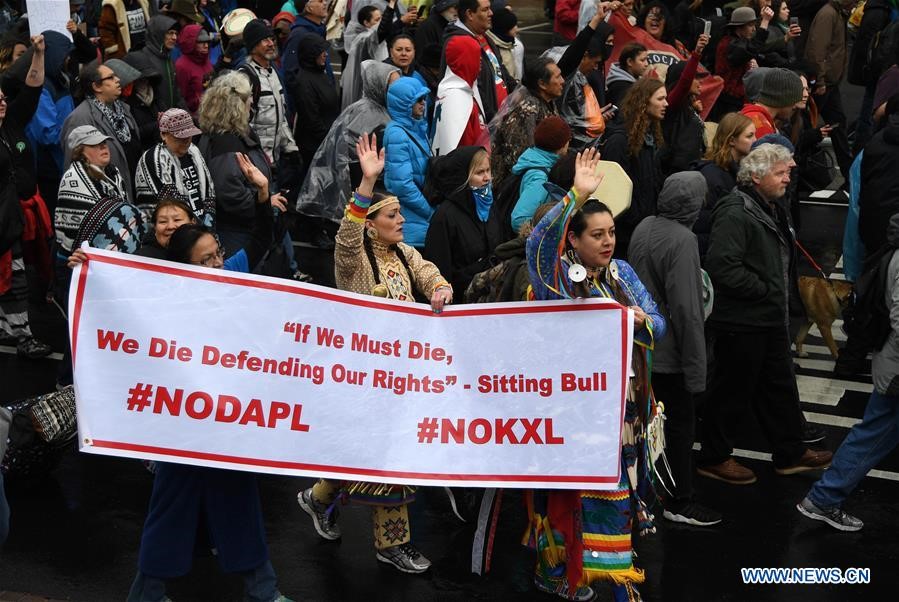Trail of Tears under Mount Rushmore: a look into the United States’ deep-rooted colonialism and racialism (2)
Trail of Tears: The United States’ colonialism and crimes of genocide
What good man would prefer a country covered with forests and ranged by a few thousand savages to our extensive Republic, studded with cities ... and filled with all the blessings of liberty, civilization, and religion ... The tribes which occupied the countries now constituting the Eastern States were annihilated or have melted away to make room for the whites.
- President Andrew Jackson’s Message to Congress “On Indian Removal”, December 6, 1830
Though vast numbers of Native Americans toiled to their death in the fields, mines, and battlegrounds of the US colonists long before the latter’s Indian Removal Act was signed into law in 1830, it is still the Trail of Tears that reminds people the most about how US colonialism came to ruin the spirit and livelihoods of the indigenous peoples of the US.
Signed into law by President Andrew Jackson, the Indian Removal Act forced countless Native Americans, such as the Cherokee, Seminole, and Chickasaw, to leave their homelands between 1830 and 1850. The forced displacements were later referred to as the Trail of Tears, with the Native American peoples having been upended and treated appallingly during their relocation. According to the US Data Repository, the members of the Cherokee nation were rounded up into concentration camps, where they were kept as “pigs in a sty,”while starvation and disease meanwhile scythed them down in droves.
According to a PBS report, the US government sent in 7,000 troops to round up and force the Cherokee into stockades at bayonet point. They were not allowed any time to gather together their belongings, and as they left, the White colonists went about looting their homes. This was the beginning of the march known as the Trail of Tears, in which 4,000 members of the Cherokee died of cold, hunger and disease on their way to faraway lands in the west.
By 1837, the Jackson administration had removed 46,000 Native American people from their land east of the Mississippi, and had secured treaties which led to the removal of an even larger number. Most members of the five southeastern nations had been relocated to lands in the west, opening up 25 million acres of land for white settlement and slavery.
The forced relocation of the Native Americans has been criticized by many scholars and experts as an act of “systematic genocide”, as the then-US government discriminated with intent against the Native Americans in such a way as to cause heavy death tolls and the inordinate suffering of indigenous American populations.
How are the Native Americans today?
Indigenous peoples from numerous nations attend a protest in Washington D.C., the United States, on March 10, 2017. Hundreds of indigenous peoples from numerous nations protested and marched against the Dakota Access pipeline and President Donald Trump. The 3.8-billion-dollar Dakota Access pipeline begins in the Bakken oil fields in North Dakota and runs southeast into Illinois. The project has led to strong protests in North Dakota near the Standing Rock Indian Reservation, as local bands are worried its construction and operation will pollute their drinking water and the natural environment and infringe upon the integrity of their cultural sites. (Xinhua/Yin Bogu)
The Trail of Tears struck a catastrophic blow to indigenous populations living in the US, leaving indigenous Americans and their descendants in a constant state of desperation, poverty, and marginalization. It was only in 1924 when Native Americans were finally granted citizenship, and up until 1957, some states had barred Native Americans from voting in local elections. Most Native American reservations situated across the US are disconnected from the country’s economic lifelines and remain untouched in terms of their material development, while Native Americans have meanwhile found themselves among the poorest groups of people in the US today.
According to statistics from Friends of Pine Ridge Reservation and Re-member, two websites that aim to help Native Americans living in the Pine Ridge Indian Reservation in South Dakota, 97% of the local population lives far below the US federal poverty line with a median household income ranging between $2,600 and $3,500 per year. Moreover, an 89% unemployment rate was identified in a 2005 Department of the Interior report. The Department of the Interior has since ceased producing estimates of "unemployment" at the reservation.
With their cultural identity and prospects for a better life being significantly eroded, suicide rates as well as rates of morbidity and mortality are markedly higher across Native American reservations in the country. According to Friends of Pine Reservation, the local teenage suicide rate is 150% higher than the US national average, while the infant mortality rate is the highest on the continent, at about a rate 300% higher than the US national average.
Having a say regarding their own land was a fantasy in days past, and remains a pipedream in contemporary times as well. In 2016, without fully consulting local indigenous groups, the Dakota Access Pipeline, which crosses beneath the Missouri River just north of the Standing Rock Sioux Reservation, was approved for construction. The Standing Rock Sioux believe that the pipeline not only presents a danger to their main source of drinking water, but also stands in flagrant violation of their rights and interests on the use of their sacred land. In the years since that decision, countless protests were held to overturn the move, with many Native Americans having been arrested as well as mistreated by local law enforcement. According to a report published by the Guardian in October, 2016, over 120 individuals were arrested at North Dakota pipeline protests at that time, many of whom were journalists and reporters observing the unfolding events.
On April 9, 2021, CNN reported that the Biden administration decided not to shut down the controversial Dakota Access Pipeline while an environmental review is being conducted, the latest blow to indigenous groups that have rallied against the project for years.
 |  |
Photos
Related Stories
- Russia says U.S. has to pay for new sanctions
- U.S. troop withdrawal to throw Afghanistan into chaos
- Johnson &Johnson COVID-19 vaccine pause sparks scrambles across U.S., media reports
- U.S. regional manufacturing continues to improve in April: survey
- U.S. agricultural futures close mixed
- U.S. weekly jobless claims drop to 576,000, lowest since pandemic outbreak
- U.S. Senate votes to open debate on anti-Asian American hate crimes bill
- U.S. new anti-terrorism program violates human rights: UN experts
- U.S. minority communities urged to unite in fighting racism, xenophobia
- U.S. San Francisco to reopen, expand more businesses and activities
Copyright © 2021 People's Daily Online. All Rights Reserved.












